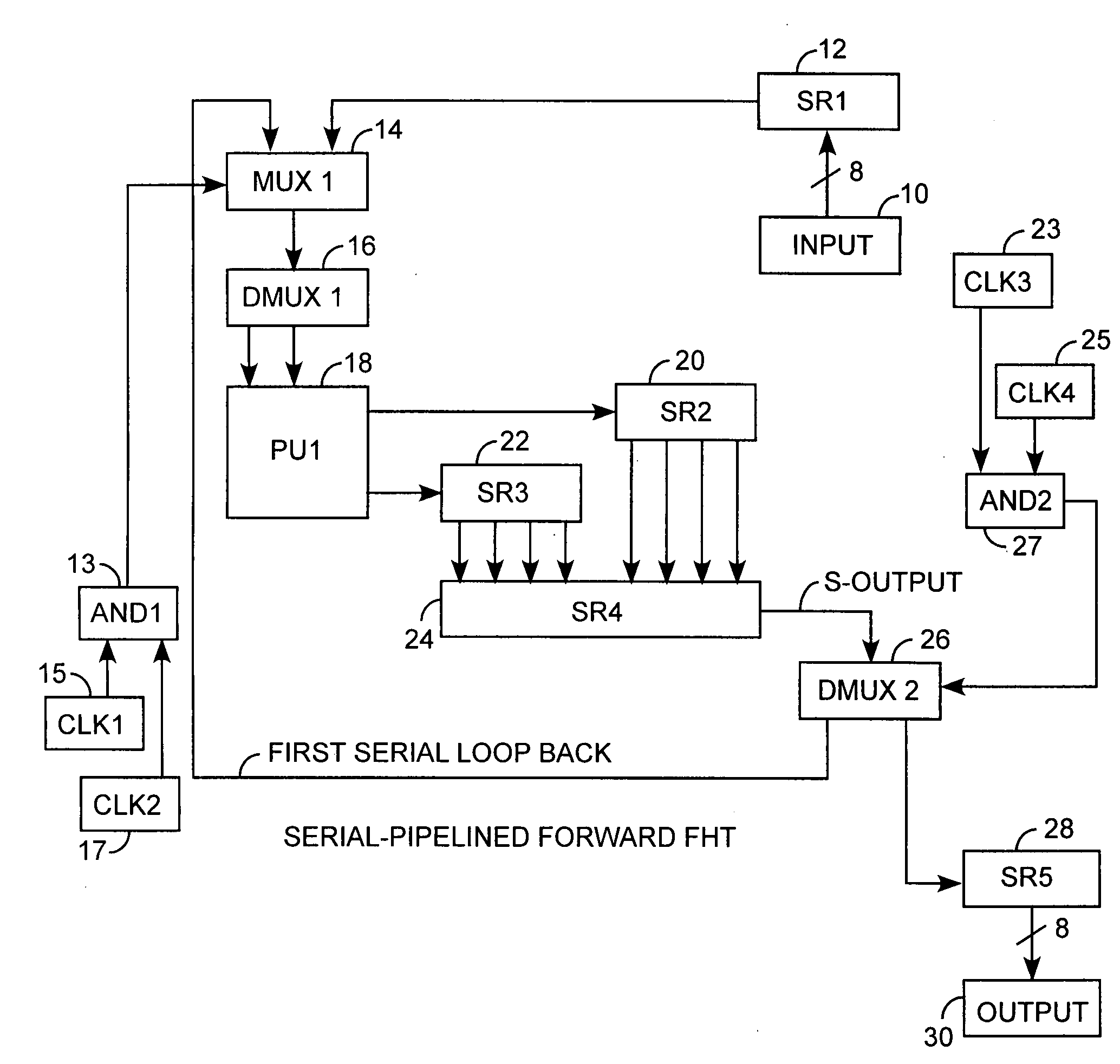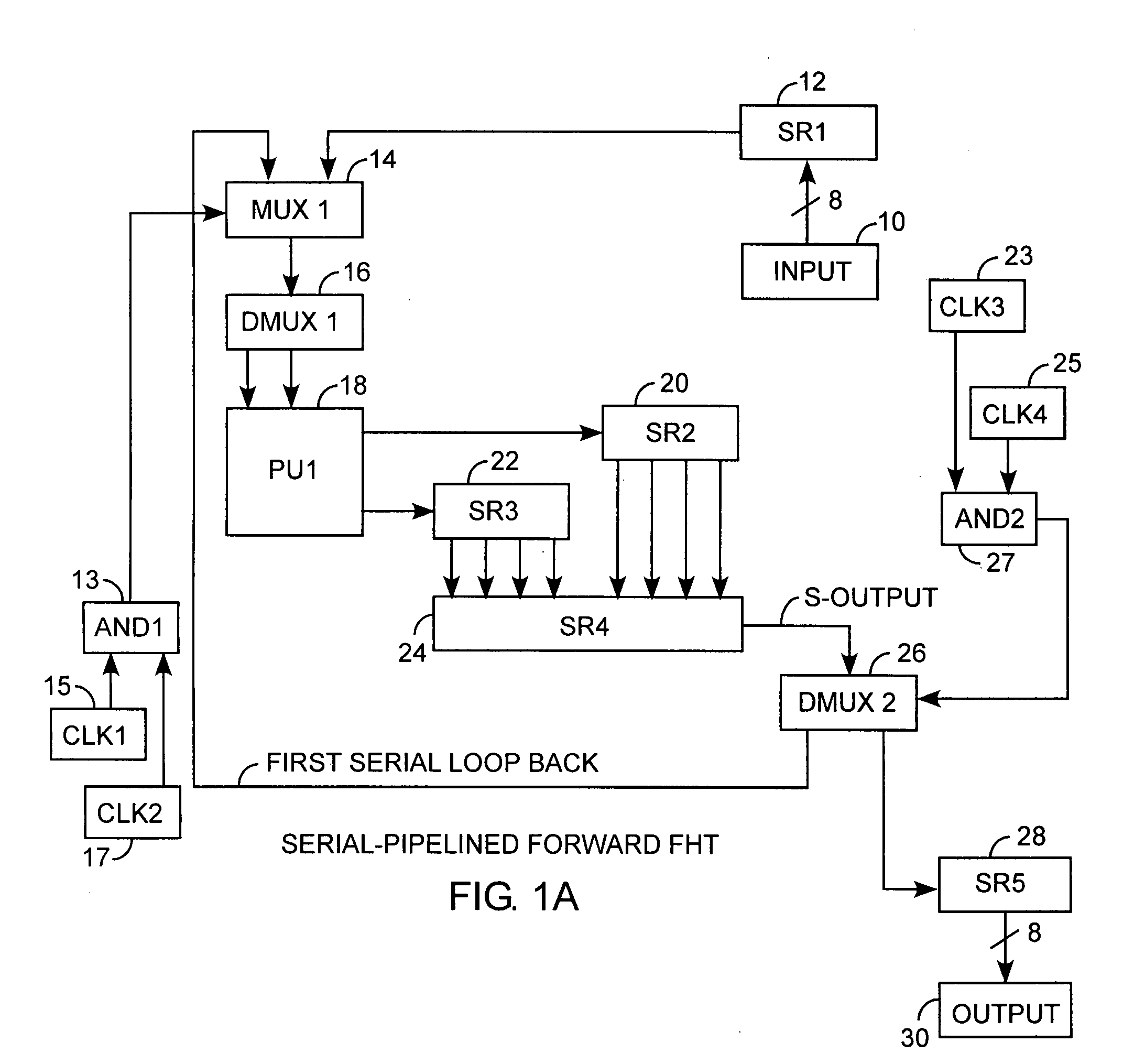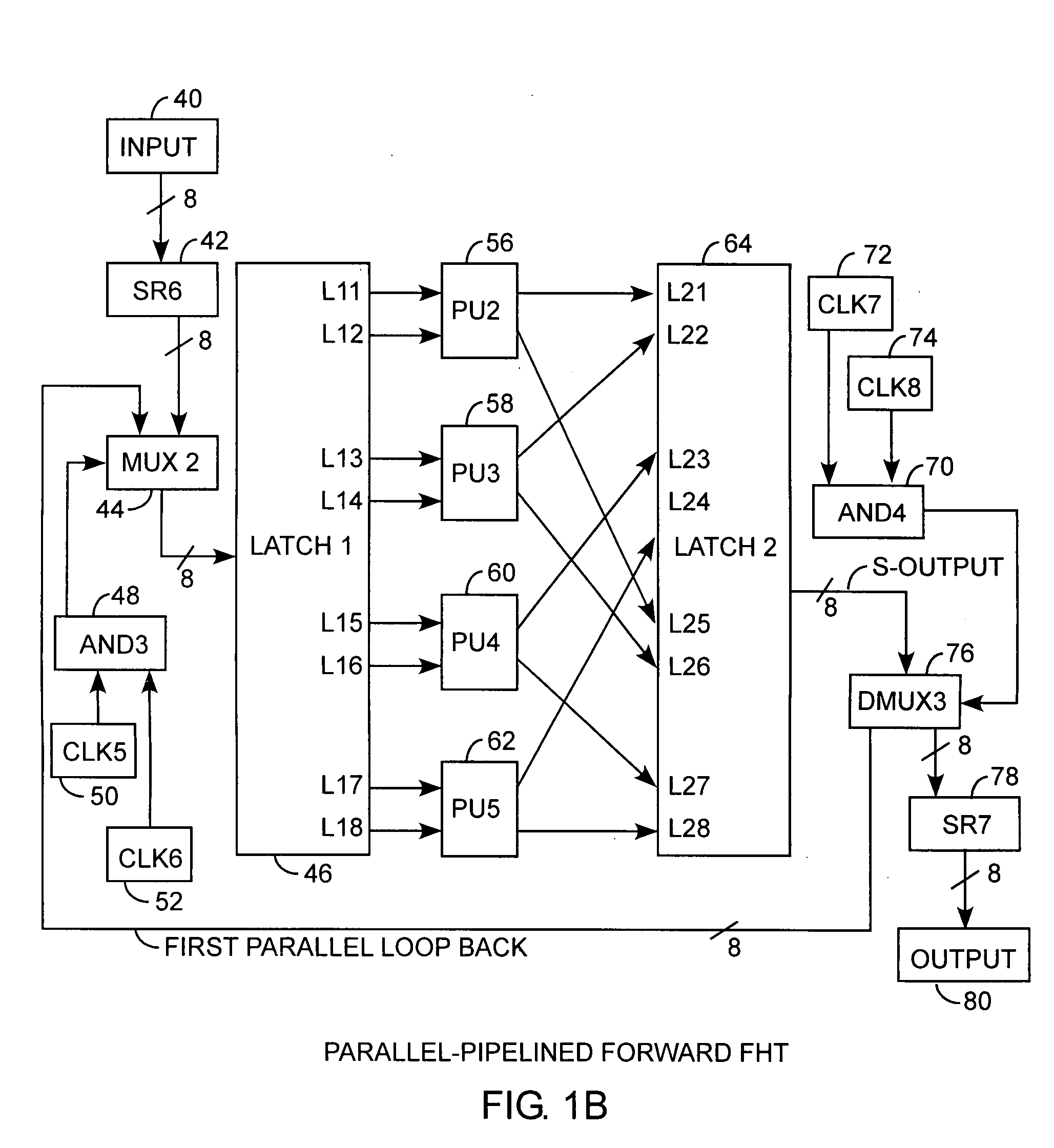Low power Fast Hadamard transform
a hadamard transform, low-power technology, applied in the field of transformations, can solve the problems of unnormalized hadamard transform, unnormalized hadamard transform, and inability to normalize hadamard transform, so as to reduce power consumption, chip area, and weight.
- Summary
- Abstract
- Description
- Claims
- Application Information
AI Technical Summary
Benefits of technology
Problems solved by technology
Method used
Image
Examples
Embodiment Construction
[0032]An embodiment of the invention is described with reference to the figures using reference designations as shown in the figures. The figures show, serial and parallel, forward and inverse, Fast Hadamard transforms (FHTs) of four varieties, each using either normalized or unnormalized processing units (PUs), that in turn, use fast processing units Fa and Fb.
[0033]Referring to FIG. 1A, a serial-pipelined forward FHT includes an eight-bit input 10 fed into a first parallel-to-serial shift register 12 shifting serial input data into a first serial multiplexer 14. The multiplexer 14 also receives an S-output feed back through a first serial loop back path. The multiplexer 14 has an output that is fed into the first serial demultiplexer 16 receiving the input as serial data. The multiplexer 14 is clocked by a first AND gate 13 having clocking inputs from a first clock 15 and a second clock 17. The demultiplexer 16 converts serial data into parallel data that is fed into a first 4+4 p...
PUM
 Login to View More
Login to View More Abstract
Description
Claims
Application Information
 Login to View More
Login to View More - R&D
- Intellectual Property
- Life Sciences
- Materials
- Tech Scout
- Unparalleled Data Quality
- Higher Quality Content
- 60% Fewer Hallucinations
Browse by: Latest US Patents, China's latest patents, Technical Efficacy Thesaurus, Application Domain, Technology Topic, Popular Technical Reports.
© 2025 PatSnap. All rights reserved.Legal|Privacy policy|Modern Slavery Act Transparency Statement|Sitemap|About US| Contact US: help@patsnap.com



